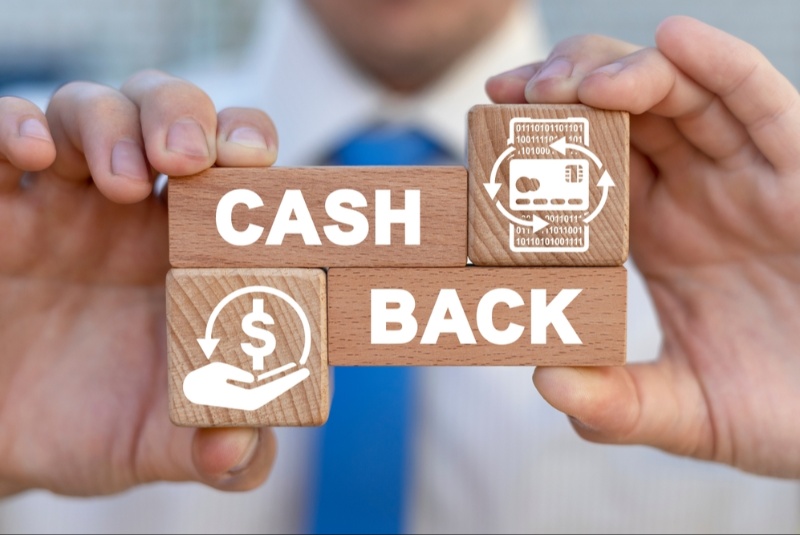In today’s consumer market, rebates and cash backs have become prominent tools for both businesses and consumers. They’re widely recognized for adding value and making purchases feel worthwhile. While they may appear simple—buy something and get a percentage of the cost back—there’s a deeper layer to these incentives.
1. Rebates vs. Cash Backs: Knowing the Difference
Both rebates and cash backs reward the consumer with a partial refund, but they differ significantly in application and benefits.
- Rebates: These are refunds issued to customers after they make a purchase. In the past, customers had to mail in proof of purchase, but today, many companies process rebates online, making the experience faster and more convenient. Rebates are popular with retailers and manufacturers to incentivize specific product sales.
- Cash Backs: Typically linked to credit card rewards, cash backs offer consumers a set percentage of their purchase back in cash or as a statement credit. Credit card companies use cash back offers to attract loyal customers, who often use these cards for larger purchases and repeat spending.
2. Why Businesses Use Rebates and Cash Backs
Rebates and cash backs aren’t just beneficial for customers—they’re strategic tools for businesses. By providing rebates, companies encourage immediate sales and gather valuable consumer data. Cash backs, meanwhile, enhance brand loyalty and entice new customers to use cash-back credit cards. Here are some of the primary goals of offering these incentives:
- Stimulating Sales: Offering a rebate can make a higher-priced product more attractive. It may encourage shoppers to purchase items they would normally skip due to the cost.
- Increasing Brand Loyalty: Cash backs, particularly when linked to a credit card, foster loyalty. Shoppers who use cash-back cards may be more likely to choose the brands affiliated with their card’s rewards program.
- Collecting Consumer Data: Rebate forms often ask for information like addresses and email contacts, providing valuable insights for businesses on who’s buying and where they can improve outreach.
3. The Customer Benefits
For consumers, the appeal of cash backs and rebates is clear. The chance to save money on purchases adds value to the shopping experience and can even influence buying choices.
- Real Savings: Cash backs and rebates provide opportunities to reduce spending, especially on high-priced items or frequent purchases. This can add up over time, especially for consumers who use cash-back cards on essentials.
- Sense of Achievement: Getting money back often feels like securing a good deal, creating a positive shopping experience that feels more rewarding.

4. Navigating the Fine Print of Rebates and Cash Backs
While rebates and cash backs are advantageous, understanding the conditions and limitations is crucial. Here are key considerations to keep in mind to avoid any surprises:
- Expiration Dates: Many rebates come with specific redemption windows. If you miss it, the rebate is no longer valid.
- Eligibility: Some rebate offers are restricted to particular products within a brand’s line. Cash backs might also vary depending on the type of transaction, such as grocery versus dining purchases.
- Limited Quantities: Some rebate offers are first-come, first-served. If a company reaches the limit on rebate submissions, subsequent ones may be denied.
- Variable Cash-Back Rates: Some credit cards assign different cash-back percentages to specific categories, like groceries or travel, and the rates can change based on promotional periods.
- Minimum Spending: Certain cash-back credit cards require a minimum spend before rewards start to accumulate. Some rebate offers might have purchase thresholds as well.
5. Navigating the Rebate Process
Following the rebate process thoroughly is essential to successfully redeeming your benefits. Here’s how to make sure you receive your full rebate:
- Read Terms and Conditions: Familiarize yourself with the details before buying the product. Be aware of deadlines, purchase limits, and any special submission requirements.
- Organize Documentation: Always save receipts, UPC codes, and rebate forms. Some rebates require all these items, and missing any documentation can mean forfeiting the rebate.
- Submit Quickly: Many rebates are time-sensitive. It’s best to submit them as soon as possible after purchase to avoid missing the deadline.
- Use Digital Options: Many companies now offer digital submission options, which provide confirmation emails and tracking. This makes it easier to keep tabs on your rebate status.
- Track the Rebate: Make a note of when you submitted your rebate, expected delivery times, and keep receipts handy. If there’s a delay, you’ll have the information needed to follow up with the company.
6. Maximizing Cash Back Rewards
To get the most out of cash-back credit cards, it’s essential to know how they work and how to avoid fees that could cut into your rewards. Here are key tips for maximizing cash-back earnings:
- Know Reward Categories: Check your card’s cash-back categories and try to align purchases with higher reward rates. For example, some cards offer 5% back on groceries or gas.
- Pay Your Balance Monthly: Carrying a balance on your cash-back card adds interest charges, which can quickly reduce any rewards earned. Paying in full each month keeps the value of the cash-back intact.
- Steer Clear of Extra Fees: Avoiding late payments, annual fees, and other charges ensures that you keep all the rewards you earn without deductions.
- Redeem Wisely: Different cash-back cards offer varied redemption options, from statement credits to gift cards. Check what works best for you, as some redemption methods offer higher value than others.
7. Practical Tips for Consumers
For savvy shoppers, combining rebates and cash backs with other smart buying practices can maximize benefits.
- Track Prices: Before making a big purchase, check whether the price fluctuates. Some cash-back offers are valid only during promotional periods, so timing can help maximize returns.
- Use Apps: Some apps, such as Rakuten or Honey, help consumers earn extra cash back by stacking rebates with existing promotions and cashback offers.
- Don’t Overextend: Just because there’s a rebate or cash-back option doesn’t mean you should buy something you don’t need. Focus on purchases that fit within your budget and align with your needs.
8. Wrapping It All Up
Both rebates and cash-back programs offer powerful benefits when used wisely. They allow consumers to enjoy savings on items they would already be purchasing. However, the key to maximizing these rewards lies in understanding the fine print, tracking timelines, and making informed decisions. For any savvy consumer, knowing how to navigate these offers can make a big difference in overall spending, letting you enjoy significant savings over time without missing out on valuable rewards.




